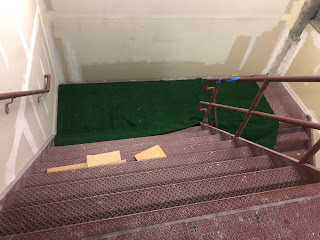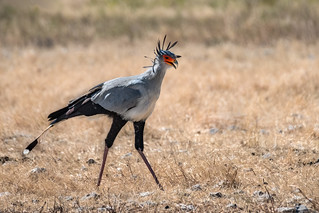[Par for the Course] A Course For The Cause!
This is a bonus Action Project for one of the elective classes I took this term called Par for the Course. If you couldn't tell by the name, this was a course that took us on a journey of learning about golf, or more specifically, mini golf. We learned about the rules of mini golf, the history of golf and mini golf, and the equipment you might need to play. We also played a lot to try and prepare our creativity for our Action Project. For our Action Project, we have been tasked with creating our own golf course. Additionally, we have to connect it to a Sustainable Development Goal and provide a movement to help solve this issue. I created a course that I think is pretty cool, so here it is!
The process of creating this course has been quite difficult. I have been creating this course on the stairs in our school, so there are a lot of flooring and formatting issues. Throughout the creation of this course, there have been many redesigns and revisions, from my first draft to the more realistic final version. In my original version, I used two staircases and multiple routes. In my second version, I used one staircase but used the actual stairs with buildings on them as Plinko. It also included a jump shot to bypass the course. In my final version, I’ve decided that all of that is not very user-friendly. In the end, my course included is much simpler and easier to understand. The top uses the base staircase floor to create a very challenging shot to where you are going. When you reach the stairs, you have a choice. If you manage to aim your ball onto the cardboard ramp, you have a much higher chance of getting close or even into the hole. If your ball goes bouncing down the stairs, it could land anywhere even out of bounds. When the ball reaches the bottom, there is a fake-grass carpet and a hole. The creation of this course helps to show the design process and how things evolve and change to be better for the user. In hindsight, the trickshot to bypass the course sounds cool in theory but just ends up making the whole course less fun in practice. Similar revisions have created the course I now have today! Here are some pictures of it's construction.:
The process of creating this course has been quite difficult. I have been creating this course on the stairs in our school, so there are a lot of flooring and formatting issues. Throughout the creation of this course, there have been many redesigns and revisions, from my first draft to the more realistic final version. In my original version, I used two staircases and multiple routes. In my second version, I used one staircase but used the actual stairs with buildings on them as Plinko. It also included a jump shot to bypass the course. In my final version, I’ve decided that all of that is not very user-friendly. In the end, my course included is much simpler and easier to understand. The top uses the base staircase floor to create a very challenging shot to where you are going. When you reach the stairs, you have a choice. If you manage to aim your ball onto the cardboard ramp, you have a much higher chance of getting close or even into the hole. If your ball goes bouncing down the stairs, it could land anywhere even out of bounds. When the ball reaches the bottom, there is a fake-grass carpet and a hole. The creation of this course helps to show the design process and how things evolve and change to be better for the user. In hindsight, the trickshot to bypass the course sounds cool in theory but just ends up making the whole course less fun in practice. Similar revisions have created the course I now have today! Here are some pictures of it's construction.:
L.A.H, Step One, 2022
L.A.H, Step Two, 2022
L.A.H, Step Three, 2022
L.A.H, Step Four, 2022
L.A.H, Step Five, 2022
The theme of my course is inequality in housing. In my humanities course, Rhetoric, we have been talking a lot about housing and how the rich try to keep affordable housing to a minimum and contained to specific areas. I decided to use what I had learned for my Par for the Course elective and create a course based on SDG 11, which is “Make cities and human settlements inclusive, safe, resilient and sustainable.” In my course, I wanted to represent the inequality in housing by creating an upper area where all of the big houses that somehow only house one family are as well (represented by the large board) as a lower area that has slums and cramped affordable housing (represented by the board that varies in height, to look like apartment buildings). This is to show the gentrification and the intentional classism of the most wealthy to separate themselves from the “lower class” working people. I also wanted to integrate these ideas into my course without it feeling like it was shoved in there for a project. I believe that both of these ideas fit in well and do not take away from the course or the idea, even though they are merged into one. If you want to assist with solving this issue, you can contribute to the Chicago Coalition for the Homeless
That's the project! I found this project very fun and I was glad to be able to put my creativity to the test. I also enjoyed seeing other people play my course and enjoy it during our Final Presentations. Unfortunately, I wasn't able to take the measurements for a scale drawing, so if I were to do this project again I'd include that. Other than that, I'm very happy with how this turned out. Look out for the next term!






Comments
Post a Comment